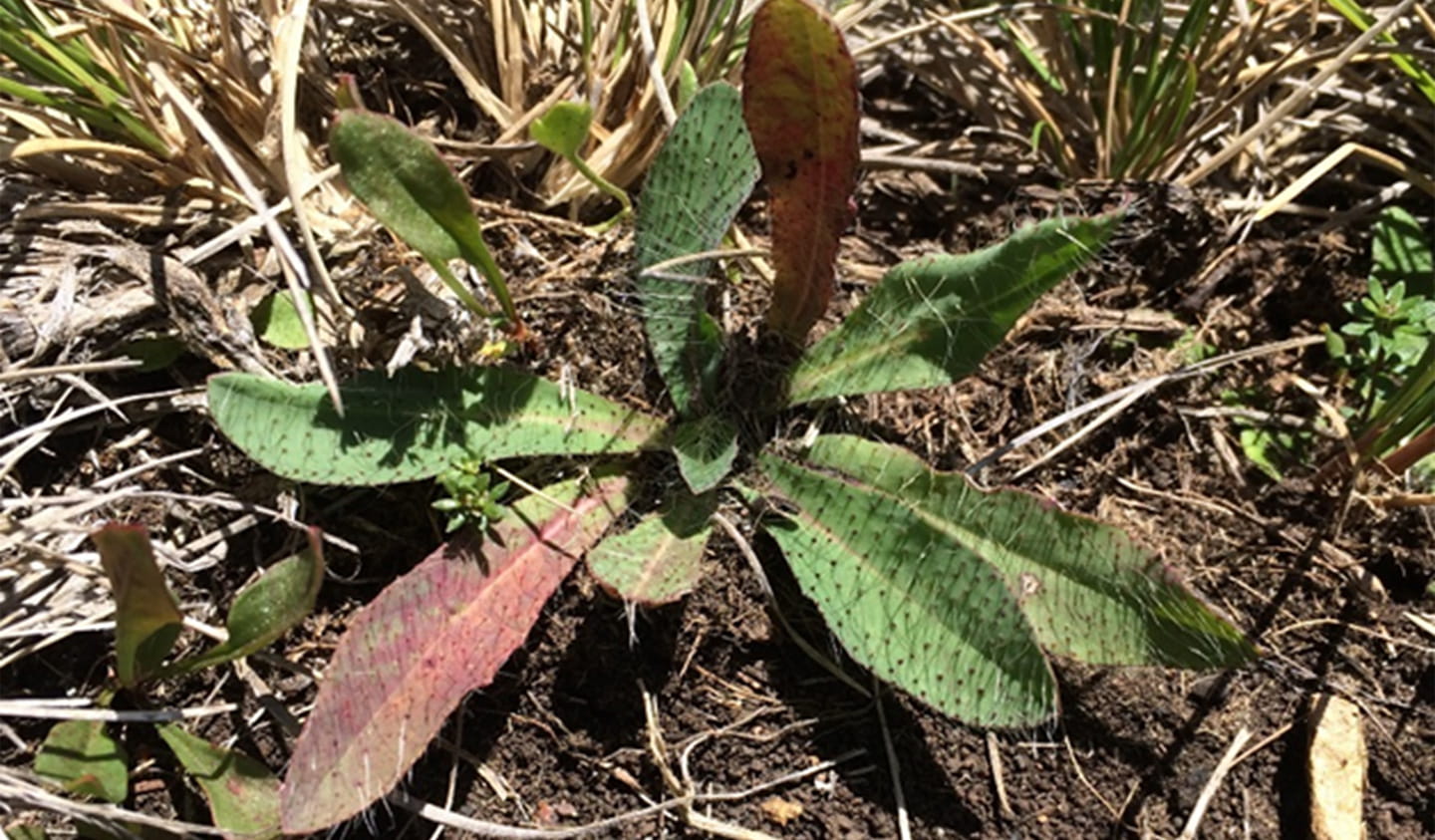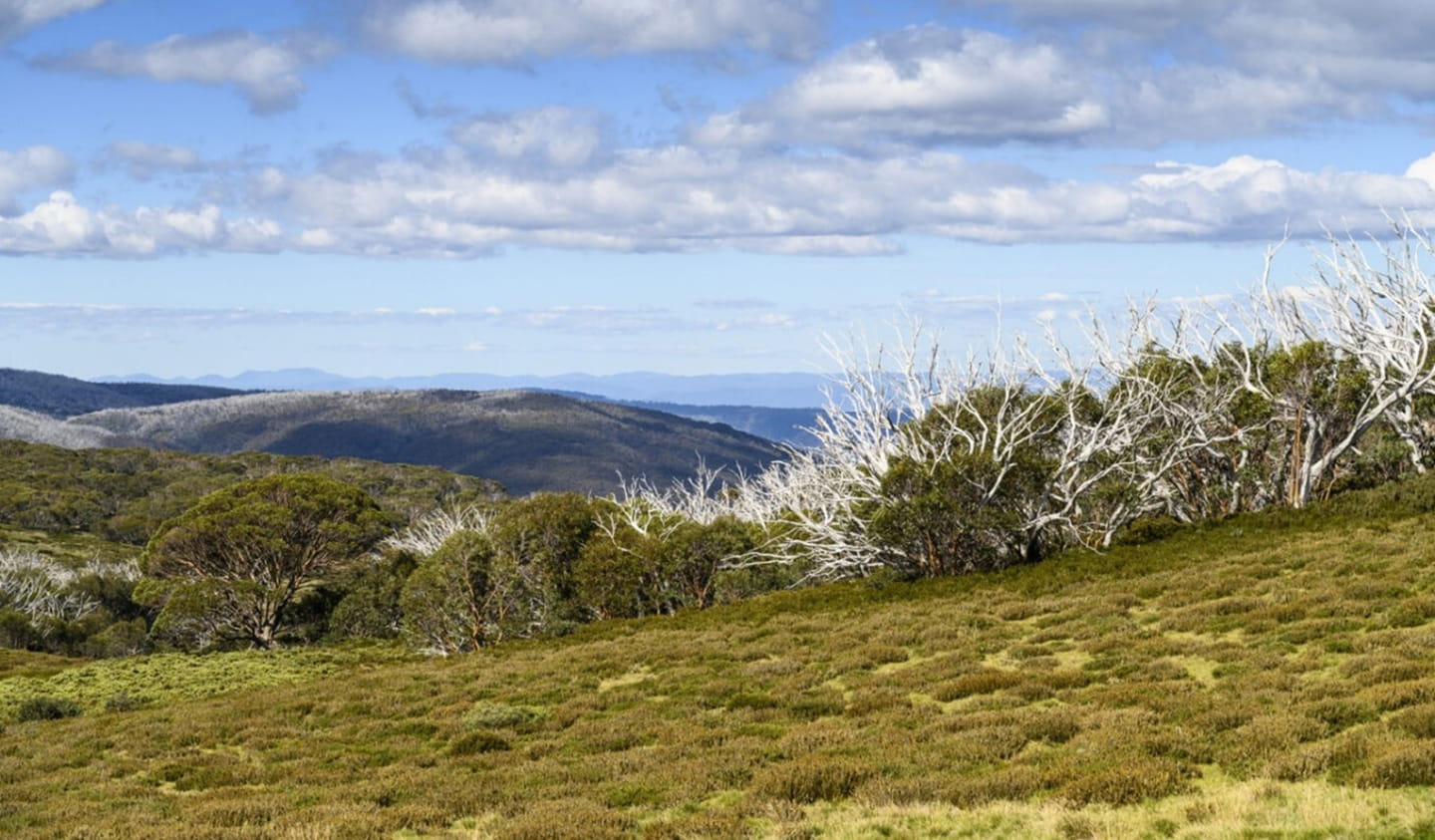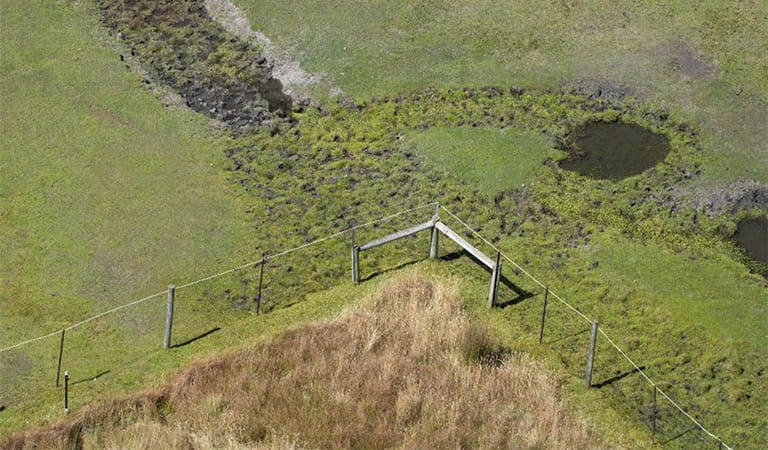Threats and conservation of the alps
The alpine environment is one of Australia’s most threatened habitats and has been highly infiltrated by weeds. Invasive plants such as English and Cape Broom, Willows, Ox-eye daisies and Hawkweeds pose a significant threat to these unique ecological communities. English Broom in particular, has seed that can remain viable for over 80 years once established. Parks Victoria conservation management plans are highly tailored to reduce the ongoing threat of these weeds and restore the extent of rare and threatened alpine flora.
One of the overarching issues concern pestilent animals, particularly feral horses, and deer (such as Sambar deer). Their hard hoofs (an adaptation not found in any native Australian animal in the region) are of particular concern to the soft sediment and moss, especially in Alpine Sphagnum bogs. Many of the plants in this environment have very small windows of time to seed, which makes them particularly susceptible to land change.
Historical use of the land is critical in understanding how to conserve it. Much of this land was also utilised for summer grazing by cattle from the early 1800s, and in some cases, has irreversibly changed the landscape. Parks Victoria has a legislative responsibility to ensure the long-term health of sensitive alpine environments, which includes managing the major impacts of horses and deer through control efforts. Other pests of threat to this region include foxes (Vulpes vulpes), feral pigs (Sus scrofa), goats (Capra aegagrus hircus), wild dogs (Canis lupus familaris), European rabbits (Oryctolagus cuniculus) and feral cats (Felis silvestris catus).

It’s suspected that at least one species of Hawkweed was introduced in Victoria through second-hand ski equipment brought in from New Zealand. Three species of Hawkweed are known from the Victorian alpine regions, and each has the capacity to reduce the biodiverse plains into a monoculture of orange and yellow flowers. Images credit: Brenda Skene

This scene (near Falls Creek) is a ghastly reminder of previous bushfires. The white skeletal trees dominate the landscape and can be seen all the way throughout the topography of this image. Image credit: Parks Victoria
For other Parks Victoria articles regarding pests and threats, see below:
- At the top of the world and nowhere to go? Parks Victoria's commitment to the Victorian alps
- Feral horses
- Deer
- Feral animals
- Parks Victoria’s Land Management Strategy 2022
- Nature Conservation Strategy 2021-2031
Human induced climate change is one of the biggest threats faced by the Victorian alps. As the climate warms to unprecedented levels, the prevalence of bushfire risks will increase, and this could decimate the remaining strongholds of alpine habitat without Parks Victoria help.
Over 90% of the known area managed by Parks Victoria has been burnt by large scale bushfires in the recent past. Whereas some plant communities in Victoria may benefit from regular ecological burns (such as the grasslands in the western districts), this is not true of the alpine areas. Cumulative impacts of repeated major bushfires over the last two decades have decimated known conservation zones, and many old growth areas may take more than 300 years to fully recover from these effects.
It’s the million-dollar question: how do you protect the alps in the face of extraordinary threats and climate change? The threats are multifaceted and convoluted, and climate change is no longer thought of as a distant thought; it’s arrived on Victoria’s doorstep, and its impacts are intensifying and terrifying.
At Parks Victoria, we have created the Greater Alpine National Parks Management Plan and the Feral Horse Action Plan to address these threats that are locally specific to this region, and also work on a number of threatened species recovery plans managed by numerous agencies. As we have a legislative responsibility to look after these regions, it is equally as important to be transparent in our actions to the Victorian public. One of the most important roles Parks Victoria has is communicating the story of this region from numerous perspectives, and involving those with interests and skills to leverage our efforts towards the protection of this area.
The Greater Alpine National Parks Management Plan (2016) is a strategic guide that applies landscape-scale approaches for catchments, pest plants and animals, recreation, and tourism. It enables active and evidence-based adaptive management and acknowledges the need to improve our understanding of the parks through innovative collection and sharing of scientific research and monitoring, and local community knowledge.

This scene (near Falls Creek) is a ghastly reminder of previous bushfires. The white skeletal trees dominate the landscape and can be seen all the way throughout the topography of this image. Image credit: Parks Victoria

The difference an exclusion plot can make. This area in Native Cat Flat demonstrates the effects of overgrazing and trampling by feral horses. The grass is mown to the ground surface, the streambank vegetation has been completely removed and trampling is evident along the length of the stream. The only remaining habitat for wetland-dependent fauna occurs within the fenced enclosures of this area. Image credit: Parks Victoria
Across the planning areas, eight strategies are identified as the highest priorities for urgent action. These strategies address the key threats to multiple parks, ecosystems and catchments and aim to achieve the best outcomes for these parks:
- Feral horse control: an integrated approach is required to prevent new populations of feral horses establishing across the planning area. Parks Victoria will remove isolated populations of feral horses where eradication is feasible.
- Deer control: preventing the establishment of new deer and removing isolated or emerging deer populations where eradication is possible.
- Targeted weed containment: Eradicate new and emerging weeds, including hawkweeds, and preventing new infestations by improving boundary biosecurity, public education and growing cooperation with resort managers, other adjacent landowners, and nurseries.
- Giving input into fire management strategies to protect and enhance ecosystems: protecting ecosystems and other natural values recovering from major bushfires, flood, and other impacts. Helping other agencies undertake planned burning, improving Victoria’s rapid attack capability and other preparedness activities to protect ecosystems and environmental values from potential impacts of severe large-scale bushfires and inappropriate fire regimes.
- Responding effectively to climate change: Using climate science to inform adaptive management to ensure flexible and effective responses to emerging threats. Continue programs to protect areas from anticipated changes in recreation, weeds, and pest animal distribution and fire regimes. Identify and protect areas that can act as climate change refugia.
- Landscape scale fox, feral pig, and feral cat control: reducing fox, feral pig and feral cat abundance to levels that allow increasing distribution and abundance of susceptible fauna and ground dwelling mammals, such as the Mountain Pygmy Possum (Burramys parvus) and Brush-tailed Rock Wallaby (Petrogale penicillata).
- Integrated work with all Traditional Owners: Parks Victoria actively recognises the value of environmental information, knowledge and expertise held by Traditional Owners. Partnering with Traditional Owners will enhance conservation management and associated cultural benefits. Parks Victoria will be investigating measures and indicators of Traditional Owners Healthy Country with Traditional Owners.
- Benefits beyond boundaries: Cooperating with neighbouring landholders and agencies to manage weeds, pest animals (including wild dogs) and other major threats to private and public land.
The Feral Horse Action Plan (2021) describes Victoria’s approach to improve the management of feral horses and reducing the damage they cause to vulnerable natural and Aboriginal cultural values. A significant reduction in the established eastern Alps feral horse population, removal of isolated populations and prevention of new populations of feral horses becoming established are top priorities. The most humane, safe, and effective horse control methods available will be used where possible.

